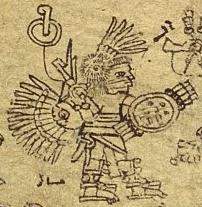Codex Xolotl facts for kids
The Codex Xolotl is an ancient book from the Aztec times. It's like a special map and history book combined! It was made after the Spanish arrived in Mexico, probably before the year 1542. This amazing book tells us about the history of the Valley of Mexico, especially the city of Texcoco. It covers events from when the Chichimeca people, led by their king Xolotl, first came to the valley in 1224, all the way to a big war called the Tepanec War in 1427.
The codex says that when Xolotl and the Chichimeca arrived, the valley was empty. They settled there peacefully. A historian from Texcoco named Fernando de Alva Cortés Ixtlilxochitl (who lived from 1568 to 1648) also wrote about this. However, other clues suggest that the Toltec people might have lived there before.
Ixtlilxochitl was a direct descendant of important leaders like Ixtlilxochitl I and Ixtlilxochitl II. He used many old documents for his writings. He likely got these papers from his family in Texcoco or Teotihuacan. The Codex Xolotl was first brought to Europe in 1840 by a French scientist named Joseph Marius Alexis Aubin. Today, you can find it at the Bibliothèque nationale de France in Paris.
The manuscript is made of six special boards called amatl. These boards are about 42 by 48 centimeters (16.5 by 18.9 inches) in size. The codex has ten full pages and three smaller pieces from other pages. We don't know who put the book together. But it's bound like a European book, with pages facing each other. The Codex Xolotl has been a very important source. It gives us lots of details about how life, society, and culture changed in the region during that time. It is one of the few surviving map-like histories from the Valley of Mexico. It is also one of the earliest books of its kind.
What is the Codex Xolotl?
The Codex Xolotl is a special type of historical document. It helps us understand the Aztec culture. The book itself shows how the Aztecs understood the history of Texcoco. It also contains some of the earliest writings in the Nahuatl language. These writings mention specific dates.
How Was the Codex Made?
There is some discussion among experts about how many people helped create the codex. Some wonder if one person wrote most of it, or if many people worked on it together. This can change how we understand the information in the document. It might show how much personal ideas were included in the writing.


